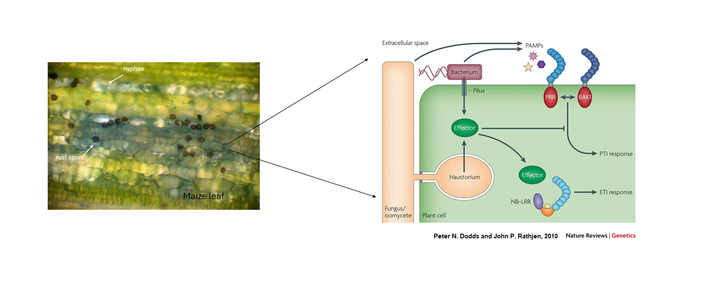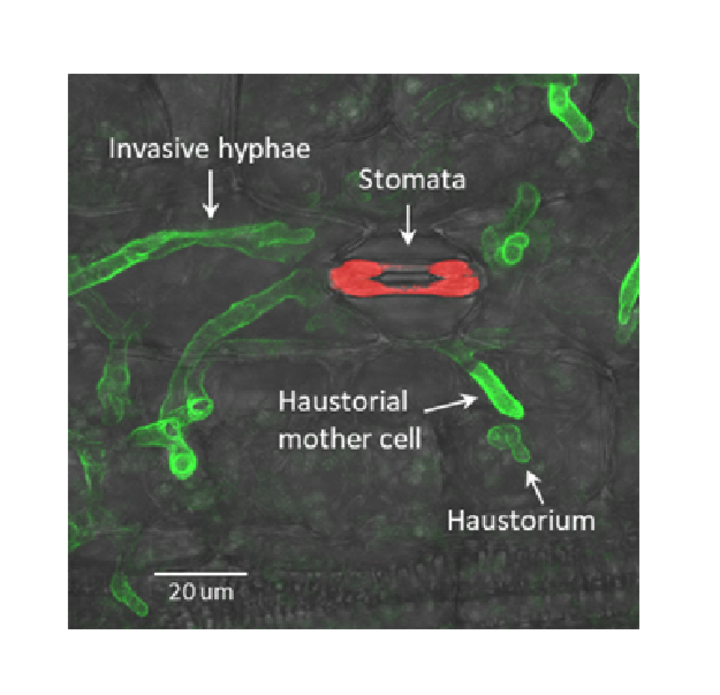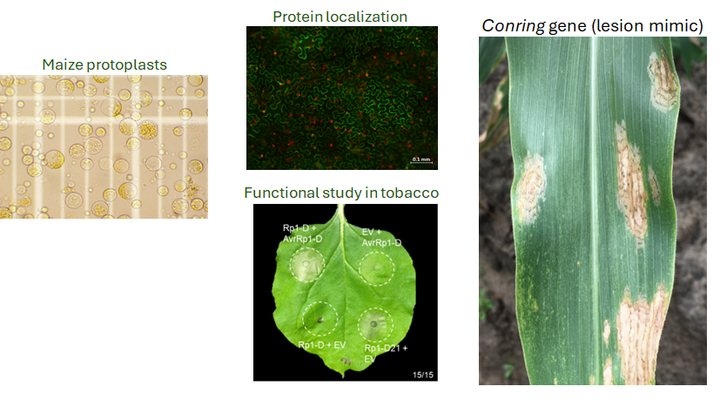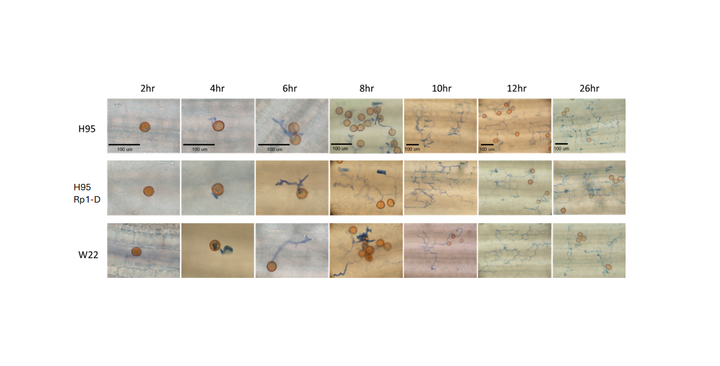Introduction
Crops such as corn and peppers face numerous attacks from various pathogens in the field, which can lead to reduced yields. To gain a better understanding of how plants defend themselves against pathogens and how pathogens cause disease in plants, Dr. Kim and her team study the molecular interactions between crop plants such as maize and sorghum and rust pathogens, an obligate biotrophic fungus that causes rust disease.
From both the plant and pathogen perspectives, we employ genetics, genomics, molecular biology, virology, and bioinformatics to identify pathogenic proteins that suppress the plant immune response and plant proteins that induce it. Our primary objective is to create rust-resistant crops by integrating findings from various research initiatives.

How do fungal pathogens infect plants?
Obligate biotrophic fungi form haustoria to uptake nutrients and water from the plants and manipulate plant defense responses. Fungi secrete thousands of fungal proteins called ‘effectors’ into mesophyll cells through haustoria. We study what effectors are associated with virulence and how they regulate plant immunity. The main rust fungi we love are common rust caused by P. sorghi and southern corn rust caused by P. polysora in maize, and sorghum rust caused by P. purpurea in sorghum.

What are our approaches to understanding the interactions between maize and rust at the molecular level?
We have been using various techniques, such as RNA-seq analysis, cell biology, and molecular biology. Fantastic collaboration also give us more opportunities to expand our knowledge.

